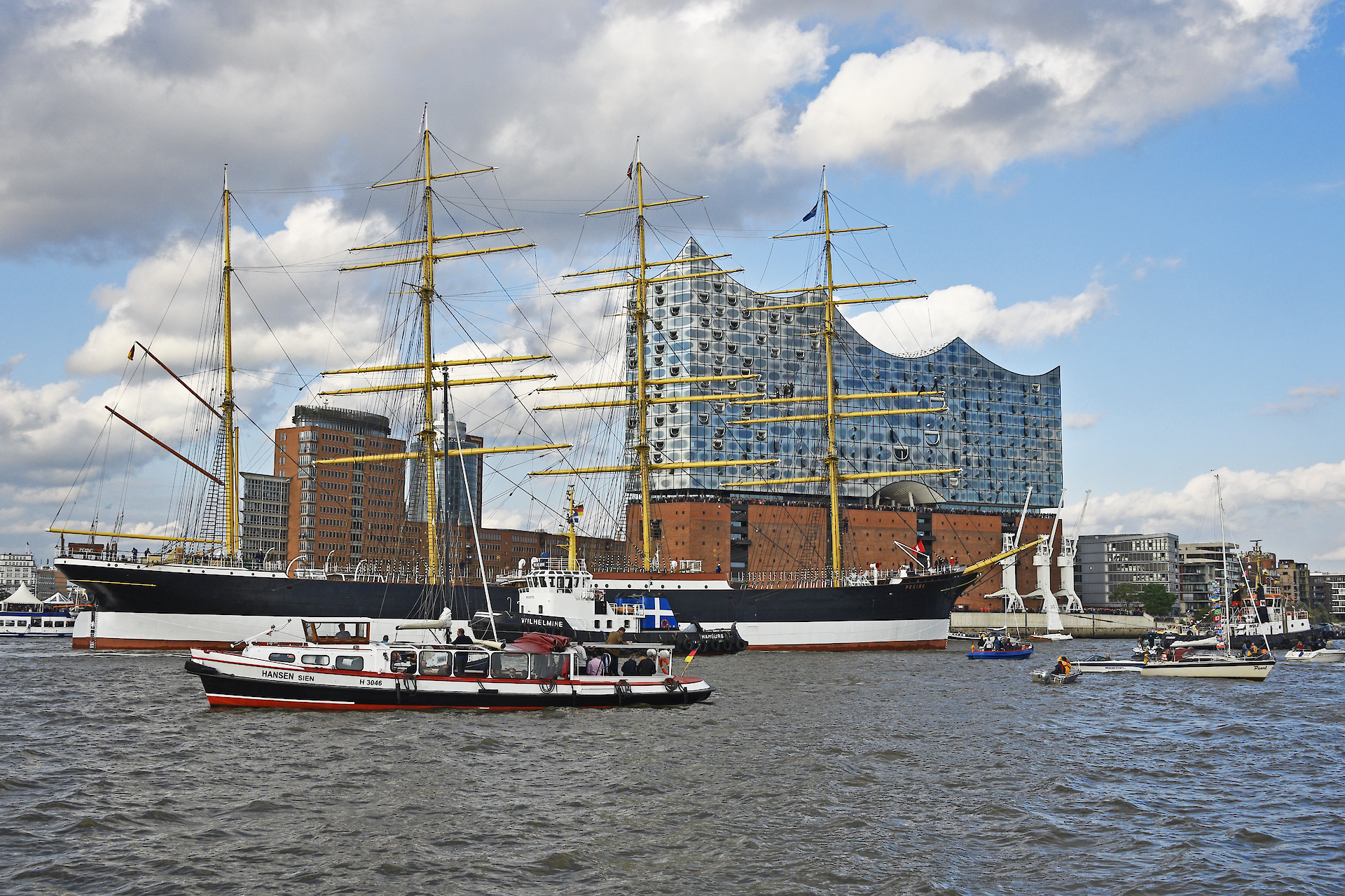After 88 years the historic four-masted barque PEKING returned to its home port. Monday morning, the former sailing cargo ship left the shipyard “Peters Werft”, where it was successfully restored on behalf of the Hamburg Maritime Foundation (Stiftung Hamburg Maritim). At her interim berth at Bremerkai, the PEKING will be converted into the main attraction of the future German Port Museum by the Hamburg Historical Museums Foundation (Stiftung Historische Museen Hamburg).
The steel-hulled four-masted barque was launched in 1911 by Blohm+Voss in Hamburg. The PEKING is one of the so-called "Flying P-Liners" of the traditional Hamburg shipping company F. Laeisz, which were known worldwide for their safety and speed. Together with her eight sister ships, the PEKING was mainly used in the saltpeter trade with South America, making 34 trips around the legendary Cape Horn in her time. After a conversion in 1932, the PEKING was used as a boarding school under the name ARETHUSA. In 1974, the freighter was purchased by the South Seaport Museum in New York, where it served as a museum ship for over 40 years before being taken over by the Hamburg Maritime Foundation in 2015.
Starting in the summer of 2021, the PEKING will be accessible to visitors as a new highlight of the German Port Museum, which is scheduled to open in Hamburg in 2025.
Even though the historic saltpeter-route Hamburg-Chile is no longer served by traditional sailing vessels, the Port of Hamburg is well positioned in South American trade. A total of eleven liner services connect Germany's largest universal port with South America, four of which regularly call at the ports of Arica, Iquique, Puerto Angamos, San Antonio and Valparaiso in Chile.
Saltpeter has since been replaced by chemical fertilizers for the most part, which are handled at Hamburg's numerous bulk terminals. Even amid the difficult economic conditions of recent months, the Port of Hamburg achieved an 8.1 percent increase in the handling of fertilizers.
Vessel characteristics:
| Type of ship | sailing cargo ship |
| Length over all | 115 m |
| Width | 14,40 m |
| Draft max. | 7,24 m |
| Rigging type | four-masted barque |
| Mast height | 62 m (above keel); 51 m (above deck); 54 m (above waterline) |
| Sail area | 4100 m² |
| Speed max. | 17 knots (31 km/h) |
| Crew | 31 men + 43 naval officer cadets |
| Commissioned | 16 May 1911 |
| Home port | Hamburg |
| Shipyard | Blohm + Voss |

